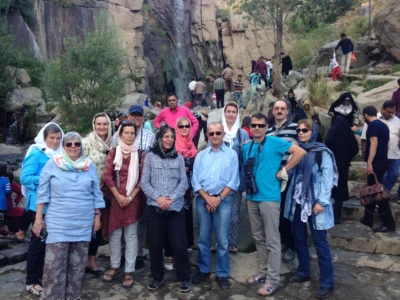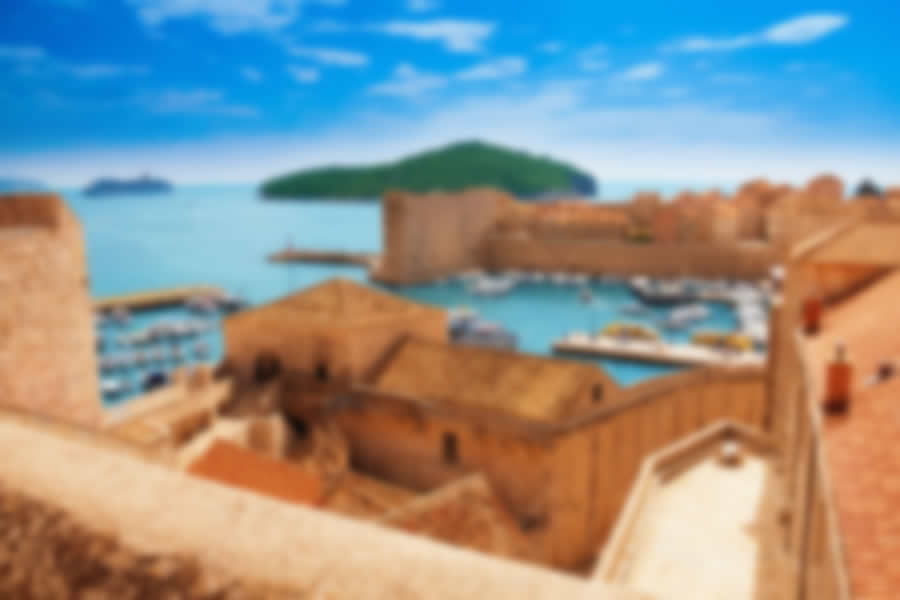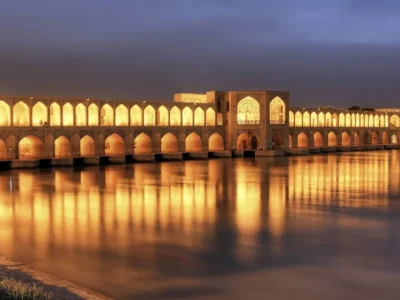ISFAHAN
Isfahan, also known as Esfahan, is a historic city located in central Iran. It is the capital of Isfahan Province and is situated at the foothills of the Zagros Mountains in the lush and fertile Zayandeh Rud River valley. The city is strategically positioned at the intersection of several major transportation routes, making it a vital economic and cultural hub in Iran.
Geographically, Isfahan lies approximately 340 kilometers south of Tehran, Iran's capital city. Its coordinates are approximately 32.6546° N latitude and 51.6680° E longitude. The city's location in the heart of Iran gives it easy access to other major cities and regions, contributing to its importance as a commercial, industrial, and tourist center.
Isfahan is renowned for its stunning natural beauty and picturesque landscapes. The Zayandeh Rud River, which flows through the city, is a lifeline for Isfahan's agricultural sector and provides water for irrigation, drinking, and recreational purposes. The river is flanked by lush greenery, parks, and gardens, creating a serene and tranquil atmosphere in the heart of the city.
The Zagros Mountains surround Isfahan and form a natural boundary between Iran's central plateau and the Mesopotamian Plain. The mountains offer breathtaking views, hiking trails, and opportunities for outdoor recreation, making them a popular destination for nature lovers and adventure enthusiasts.
In addition to its natural beauty, Isfahan is characterized by its rich architectural heritage, with numerous historic buildings, mosques, palaces, and bridges dating back to the Islamic Golden Age. The city's skyline is dominated by its mosques' iconic domes and minarets and the magnificent bridges that span the Zayandeh Rud River.
Isfahan has a rich and storied history that dates back thousands of years. In the 16th and 17th centuries, it served as the capital of the Persian Empire under the Safavid dynasty, flourishing as a center of art, culture, and commerce. Isfahan's heyday was marked by the construction of magnificent palaces, mosques, and public squares, many of which still symbolize the city's grandeur and prosperity.
One of the most famous landmarks in Isfahan is the Naqsh-e Jahan Square, also known as Imam Square. It is one of the largest public squares in the world and is surrounded by historic buildings, including the Shah Mosque, the Sheikh Lotfollah Mosque, the Ali Qapu Palace, and the Qeysarieh Portal, all of which are UNESCO World Heritage Sites.
The population of Isfahan has grown steadily over the years, driven by factors such as urbanization, economic development, and migration from rural areas. According to the latest estimates, the population of Isfahan is approximately 2.2 million people, making it the third most populous city in Iran after Tehran and Mashhad.
Isfahan is a cosmopolitan city with a diverse population comprising various ethnicities, including Persians, Kurds, Azeris, and Armenians. Its cuisine, customs, and traditions reflect the city's cultural diversity, making it a vibrant and dynamic metropolis.
Isfahan serves as an economic hub for the region, with a diverse economy driven by manufacturing, tourism, agriculture, and services. The city is known for its production of textiles, carpets, steel, and handicrafts, which are exported domestically and internationally to markets.
The tourism industry is also a major contributor to Isfahan's economy, with millions of visitors visiting the city each year to explore its historic landmarks, bazaars, and cultural attractions. Isfahan's strategic location, rich cultural heritage, and modern amenities make it an ideal destination for business travelers, tourists, and investors.
Despite its many strengths, Isfahan faces several challenges, including traffic congestion, pollution, and water scarcity. The city's rapid growth has put pressure on its infrastructure and public services, necessitating investment in urban planning, transportation, and environmental conservation.
However, Isfahan also presents numerous opportunities for growth and development, including its strategic location, educated workforce, and diverse economic base. By leveraging its strengths and addressing its challenges, Isfahan can continue to thrive as a leading center of commerce, culture, and innovation in Iran.
In conclusion, Isfahan is a historic and vibrant city located in the heart of Iran. Its strategic location, rich cultural heritage, and dynamic population make it a unique and fascinating destination for residents and visitors alike. With careful planning and investment, Isfahan has the potential to become an even greater powerhouse in the region, contributing to the prosperity and well-being of its people for generations to come.
| Languages spoken | Farsi / Isfahani dialect |
|---|---|
| Currency used | Iranian Rials |
| Country name | Iran |
Culture and history
Isfahan, located in central Iran, is a city steeped in history, culture, and architectural brilliance. It has earned the nickname "Half of the World" for its grandeur and significance in Persian history. Let's explore the various facets that make Isfahan a captivating destination.
Historical Significance: Isfahan's history dates back to ancient times, with evidence of settlements as far back as the Achaemenid Empire. However, it rose to prominence during the Safavid era in the 16th and 17th centuries when it became the capital of Persia under Shah Abbas I. The city became a hub for trade, art, and scholarship, leaving an indelible mark on its urban fabric and cultural identity.
Architectural Marvels: The city is home to some of the world's most breathtaking architecture. Naqsh-e Jahan Square, a UNESCO World Heritage site, stands as a testament to Safavid architectural prowess. Surrounded by iconic structures like the Shah Mosque, Sheikh Lotfollah Mosque, and Ali Qapu Palace, the square is a masterpiece of geometric design, intricate tilework, and grand proportions.
Mosques and Religious Sites: Isfahan boasts many mosques showcasing Persian Islamic architecture. The Shah Mosque, with its turquoise dome and minarets, is a prime example. Sheikh Lotfollah Mosque, known for its unique dome and tilework, and Jameh Mosque, one of the oldest in Iran, are also noteworthy. The city's religious diversity is evident in places like Vank Cathedral in the Armenian Quarter.
Bridges over the Zayandeh River: The picturesque Zayandeh River is spanned by historic bridges, each with its own charm. Si-o-se Pol, the Bridge of 33 Arches, is a functional bridge and an architectural gem. Khaju Bridge, known for its pavilions and intricate tilework, is popular for locals and visitors.
Grand Bazaar and Qeysarie Bazaar: Isfahan's bustling bazaars are vibrant centers of commerce and culture. The Grand Bazaar, adjacent to Naqsh-e Jahan Square, is a labyrinth of narrow alleys offering many goods, from spices and textiles to traditional crafts. Qeysarie Bazaar, connected to Naqsh-e Jahan Square via Qeysarie Gate, is a historical market dating back to the Safavid era.
Gardens and Palaces: Isfahan's green spaces and historic palaces provide a tranquil escape. Chehel Sotoun, a palace surrounded by a beautiful garden, is adorned with frescoes depicting Safavid court life. Hasht Behesht Palace, set in a Persian garden, is known for its symmetrical design and stunning artwork.
Cultural Vibrancy: Isfahan's cultural scene is vibrant, with traditional music, dance, and art playing a significant role. The city hosts various festivals and events, and its teahouses and cafes blend modern and traditional atmospheres.
In summary, Isfahan is a city where the past and present seamlessly converge. Its architectural treasures, cultural richness, and warm hospitality make it a must-visit destination for those seeking to explore the heart of Persian history and heritage.
Tourist attractions
- Naqsh-e Jahan Square (Imam Square):
- Shah Mosque (Imam Mosque): This grand mosque, constructed during the Safavid era, boasts an impressive courtyard and a stunning dome adorned with intricate tilework. The entrance portal and the prayer hall are adorned with calligraphy and geometric designs.
- Sheikh Lotfollah Mosque: Known for its unique architecture and exquisite tilework, this mosque was built for the royal court. The interior is a marvel of mosaic artistry, with a delicate pink dome that changes color throughout the day.
- Ali Qapu Palace: A symbol of Safavid architectural prowess, Ali Qapu offers panoramic views of Naqsh-e Jahan Square. The music room, adorned with frescoes and stucco decorations, showcases the opulence of the Safavid court.
- Si-o-se Pol (Bridge of 33 Arches):
- This historic bridge, spanning the Zayandeh River, is a structural marvel and a social hub. The arches provide shelter for visitors, and the view of the river and the cityscape is breathtaking. In the evenings, the bridge is beautifully illuminated.
- Chehel Sotoun (Forty Columns):
- A palace surrounded by a picturesque garden, Chehel Sotoun features a grand hall with twenty slender wooden columns reflected in a large pool. The frescoes inside depict historical events and court ceremonies, providing insight into Safavid life.
- Vank Cathedral (Holy Savior Cathedral):
- This Armenian cathedral is located in the Jolfa district and is a testament to the city's religious diversity. The interior is adorned with colorful frescoes depicting biblical scenes, and the museum houses valuable artifacts from the Armenian community.
- Jolfa District:
- Stroll through Jolfa's narrow alleys and discover the charm of Armenian architecture. Visit Bethlehem Church, one of the oldest churches in Isfahan, and explore the district's cafes, boutiques, and art galleries.
- Hasht Behesht Palace:
- Surrounded by a Persian garden, Hasht Behesht is an eight-sided pavilion adorned with intricate paintings and mirrorwork. The palace offers a serene retreat, and the garden is a peaceful oasis in the city's heart.
- Imamzadeh-ye Ali Akbar:
- This pilgrimage site is a stunning example of Persian architecture. The turquoise dome and intricate tilework make it a visually striking monument, and the site holds cultural and religious significance.
- Qeysarie Bazaar:
- Explore the Grand Bazaar, where traditional Iranian craftsmanship is on display. The bazaar offers a sensory journey through Persian culture and commerce, from carpets and textiles to spices and handicrafts.
- Ali Gholi Agha Hammam:
- Step into this well-preserved Safavid-era bathhouse to experience the architecture and layout of traditional Persian hammams. The hammam's structure and decorative elements provide insight into the bathing rituals of the time.
Exploring these sights will provide a comprehensive experience of Isfahan's historical, architectural, and cultural wealth. The city's vibrant atmosphere and welcoming locals make it an unforgettable destination.

AMOUNG PERSIANS
Tehran| Hamadan| Kermanshah| Susa | Ahvaz | Shiraz | Mahan | Kerman | Yazd | IsfahanOur 15-day trip takes you across a plethora of ancient historical landmarks, a top choice for adventure travelers.

ANCIENT PERSIA
Tehran | Kashan| Naein | Yazd | IsfahanEmbark on a journey through time as you explore the prehistoric cities of Qom and Kashan, alongside the pre-Islamic marvels of Maybod, Yazd.

ANCIENT PERSIA
Tehran | Kashan| Naein | Yazd | IsfahanEmbark on a journey through time as you explore the cities of Qom and Kashan, alongside the pre-Islamic marvels of Maybod, Yazd.

IN THE REALM OF THE PERSIANS
Tehran | Abyaneh | Isfahan | Varzaneh | Yazd | Kerman | ShirazOur 16-day trip takes you across many ancient historical landmarks and stunning landscapes, making it the top choice for adventure travelers.
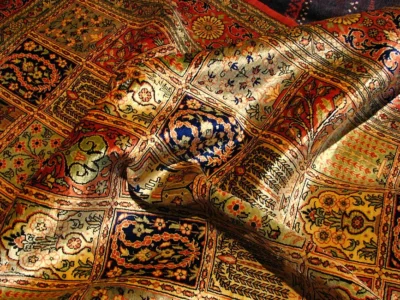
IRAN HIGHLIGHTS
Tehran | Shiraz | Yazd | Isfahan | KashanOur 8-day cultural and adventure tour takes in many of Persia's iconic highlights while uncovering different insights into the Persian lifestyle.
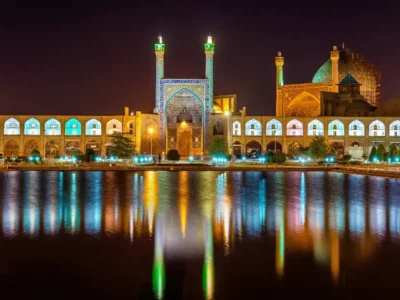
PEARLS OF PERSIA
Tehran| Isfahan| Yazd | Shiraz |Iran, once Persia, stands at the crossroads of time with a 7,000-year history, making it one of Earth's most captivating cultures.
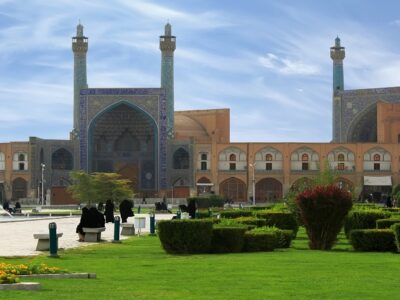
PERSIA’S GOLDEN TRIANGLE
Shiraz | Yazd | IsfahanThis seven-day trip is ideal for travelers who are short on time but wish to discover iconic landmarks of Ancient Persia.

PERSIAN CULINARY EXPLORATION
Tehran | Abyaneh | Isfahan | Varzaneh | Yazd | Kerman | ShirazOur 14-day itinerary is designed for those who wish to step back in time and feel the imperial grandeur of the ancient Persians.
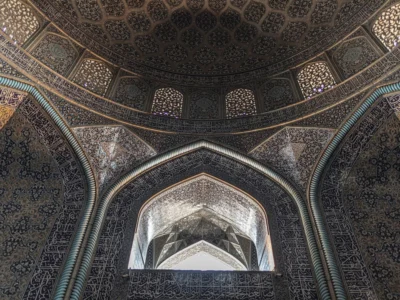
WONDERS OF PERSIA
Tehran | Abyaneh | Isfahan | Varzaneh | Yazd | Kerman | ShirazOur 14-day itinerary is designed for those who wish to step back in time and feel the imperial grandeur of the ancient Persians.
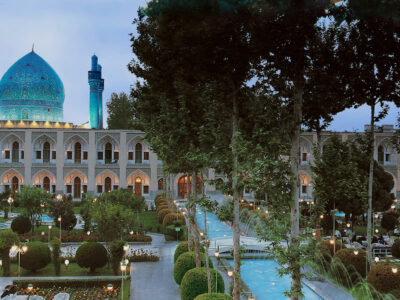
Abassi Hotel
Amadegah St., Isfahan,IranUt enim ad minim veniam, quis nostrud exercitation ullamco laboris nisi ut aliquip.

Hotel Dean
Address 1234, Dubrovnik, CroatiaUt enim ad minim veniam, quis nostrud exercitation ullamco laboris nisi ut aliquip.

